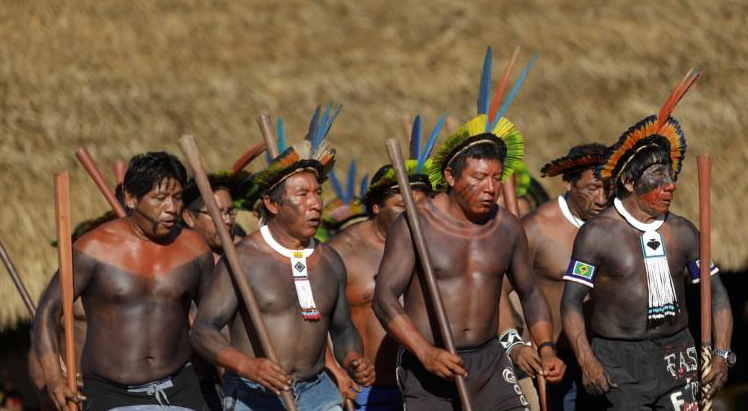BRASILIA, (Reuters) – When Europeans first arrived in the Amazon rainforest, their smallpox decimated local tribes. Then rubber tappers, gold miners and settlers brought malaria, measles and influenza.
Now many of Brazil’s 850,000 indigenous people, fearing the threat of the coronavirus pandemic, are urging officials to expel from their lands outsiders who could introduce the disease.
“We are demanding immediate removal of all intruders, miners, loggers, poachers, drug traffickers, land grabbers, missionaries and tourists who can be vectors of transmission,” said Nara Baré, head of the umbrella organization COIAB that represents the indigenous people of the Amazon rainforest.
In the upper reaches of the Rio Negro, on the border with Colombia and Venezuela, indigenous communities have closed airstrips and cut off access to their reservation lands for all non-native people arriving by boat from the Brazilian city of Manaus, deep in the Amazon.
Health experts and indigenous groups are calling especially for the expulsion of some 20,000 wildcat gold miners from the Yanomami reservation, the country’s largest located on the border with Venezuela, where tribes have been hit by malaria brought by the intruders.
The new viral threat comes at a time when far-right President Jair Bolsonaro has vowed to develop the Amazon and review the protected reservation lands where more than 300 tribes live.
A former army captain, Bolsonaro has put the government’s indigenous affairs agency Funai in the hands of farm sector interests and advocates for Christian missionaries eager to evangelize tribes.
Responding to appeals from tribal leaders, human rights groups and federal prosecutors, Funai on Monday suspended all contacts with the most isolated tribes in Brazil.
So far, the indigenous health service Sesai has reported only four suspected cases of coronavirus in indigenous communities. Only one of them is in the Amazon.
Still, many tribes remain on edge, recalling epidemics that ravaged native populations in recent memory. Measles killed thousands of indigenous Brazilians in the last century. Influenza took a heavy toll when the military dictatorship decided to carve open the rainforest with roads in the 1970s.
POOR HEALTHCARE, COMMUNAL LIFESTYLES
Access to medical services remains a challenge for remote tribes in the Amazon who must often travel for days by river to see a doctor.
The way of life in communal hamlets under large thatched structures also increases the risk of contagion if any single member contracts the new coronavirus.
“Isolating people would be a big challenge as they live in large houses inhabited by many people,” said Douglas Rodrigues, a doctor with 30 years experience in the Xingu reservation.
“Their habits are different. They eat with their hands and share many objects: forms of transmission that are mainly spreading the virus in this pandemic,” he said by telephone.
Tribes do not always have soap needed to wash hands to kill the virus, he added.
The H1N1 epidemic in 2016 killed hundreds of indigenous people, mainly of the Guaraní tribe in the colder south of Brazil, where about half of them caught the bug.
Health experts fear coronavirus could spread even faster among tribes whose immune systems often are already weakened by malnutrition, hepatitis B, tuberculosis and diabetes.
About a third of indigenous deaths in Brazil are caused by existing respiratory diseases, which have been a complicating factor in the coronavirus pandemic, said Rodrigues.
While access to medical services is easier in the rich south of Brazil, tribe members are more exposed to the virus there because they are more integrated into Brazilian society, working in the construction sector or as maids to earn a living since they can longer plant food or hunt so close to urban areas.
One potential danger is transmission of the virus by indigenous people returning to take refuge in their villages in the Amazon without knowing if they are infected or not, according to Andrey Moreira, a doctor and public health expert at Fiocruz, Brazil’s premier biomedical research lab.






